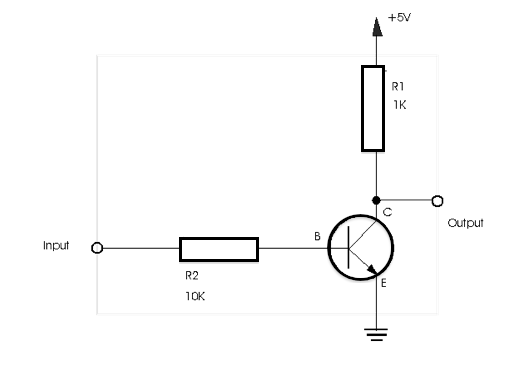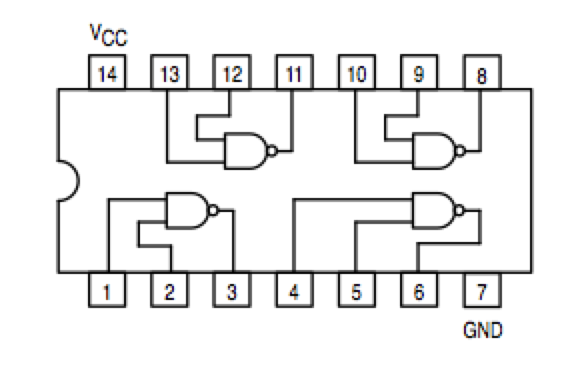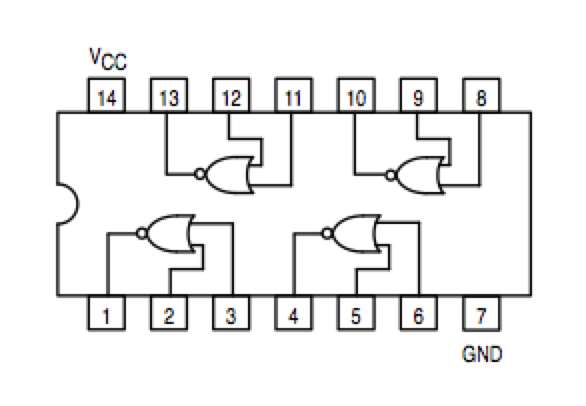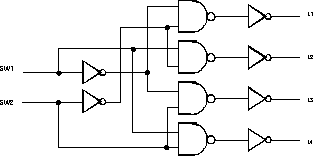CSC270 Lab 2 2012
--D. Thiebaut 14:59, 7 February 2012 (EST)
Contents
LAB #2
The Transisor
The transistor is a three-pole semiconductor. The poles are polarized and have well defined functions. They are called the collector, the base, and the emitter.
The transistor you will be using today is the 2N5772, and the manufacturer (fortunately) marked the poles on the package (E, B, and C).
Implement the circuit shown below. Connect the input of the circuit to a switch, and its output to an Indicator. Observe how the output changes as a function of the input. Generate a truth table for this circuit. What logic function does it implement?

Resistor Color Chart
- Use the resistor color chart on your bench to pick the resistors.
- This nifty interactive color-chart can be useful. It is located at http://www.smpspowersupply.com/resistor/resistorcolorcode.html

Experiment #3: 2-bit adder
- Implement the 2-bit adder with NAND gates and/or NOR gates.
- Demonstrate that your circuit works!
Experiment #3: 3-bit adder
- Implement a 3-bit adder with only NAND and/or NOR gates.
|
|
Note that the NOR circuit does not have the same pinout as the NAND circuit!!!
Decoder Circuit: the Do-It-Yourself version
Part 1
Complete the circuit shown in Figure 1 by adding the name of the circuit inside the logic symbol, and by adding the pin numbers on the inputs and outputs of the gates. Also, do not forget that each circuit requires power and ground.
When you are done, implement the circuit on the breadboard section of your kit. Make sure you have turned off the power before you start wiring. Make sure also that you connect the outputs of the inverters to the four logic indicators. Verify your connections before you turn the power back on. Activate the two inputs and record the outputs in a truth table which you'll include in your report.
Because the inactive outputs are all set to zero, and the active one is set to 1, we refer to this type of circuit as a circuit with "active high" outputs.
Part 2
Now connect L1, L2, L3 and L4 to the input of the inverters rather than their output, and record the variation of L4, L3, L2 and L1 as a function of SW2 and SW1.
SW1 SW2 L4 L3 L2 L1 0 0 0 1 1 0 1 1
You now have the opposite behavior, where the inactive outputs are all 1 except for one that is set to 0. We refer to this type of circuit as a circuit with active-low outputs.
Most decoders work as the last circuit you just tested, rather than the one you first experimented with, although the first circuit had a more "logical" behavior.


